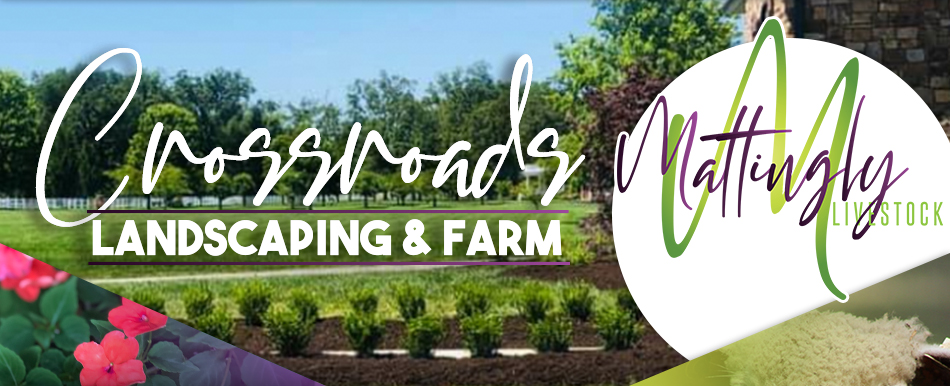Bag Worms
Outdoor enthusiasts are not the only creatures to use sleeping bags and tents to protect themselves from the elements. But then again is a bag really a tent? It’s that time of year where the devastating evidence of hitch hikers becomes painfully obvious to homeowners. If you have recently noticed damage to your trees and you see leaves turning brown or the needles falling off in your yard, you might have something called bagworms.
Bagworm caterpillars create unique 2-inch bags that can be seen hanging from branches of trees and shrubs. Sometimes the bags are mistaken for pine cones or other plant structures. These worms use over 100 different plants as their food; however, bagworms prefer juniper, arborvitae, spruce, pine, and cedar trees.
Bagworms are slow spreading because the female moth does not fly around. Winds blow the worms from plant to plant, which spread bagworm larvae without problem.
Understanding how to solve the problem of bagworms is half the battle. Treating the problem is only effective during certain stages of the lifecycle. The best time to begin treatment for bagworms is in May when they hatch. The worms overwinter in their bags and hatch the end of May and early June and begin eating plants and trees. In early August, the female moth will begin to construct bags eventually burying themselves in it for four or more weeks. At this point males leave their sacks and go to the female bags where she can lay 500 plus eggs. Treatment measures should begin before the worms get to the mating stages or problems become out of control.
The UK College of Agriculture, Food, and Environment suggests handpicking and destroying attached bags if only a few small trees or shrubs are infested. This is most effective before eggs hatch. Extension Entomologists Potter and Townsend state, “When many small bagworms are present and feeding, an insecticide may be needed to prevent serious damage. The best time to apply an insecticide is while the larvae are still small, usually in early June. Small larvae are more vulnerable to insecticides, and feeding damage is relatively minor. Carefully inspect susceptible landscape plants. Young bagworms are hard to see at first; look closely for the small, upright bags which have the appearance of tiny ice cream cones made of bits of plant material.”
Treatment for bagworms is not too difficult so long as you approach treatment and control measures at the right time in the bagworm life cycle.
Drought & Irrigation
The hot, sultry days of summer are upon us. Whenever dry weather settles in, it can affect your landscape in several ways. By implementing a few simple strategies, you can minimize the devastating effects it has on your plants and garden.
All plants handle drought differently but the most obvious sign that drought is affecting your landscape is the way it makes the plants look. Healthy foliage may begin to wilt and turn brown, flowers fade, and ultimately slow in their growth. Due to the lack of water, plants become weak making them more susceptible to disease, fungus, and insect problems. The hot, dry conditions have a lasting effect too. Often it can take trees and shrubs several years to recover from a drought.
The obvious strategy during dry weather is to adopt a regular watering routine. In most cases, it is best to water weekly providing an inch of water to keep the soil lightly moist. It can be wasteful to give your plants less water more frequently. This can discourage the roots from growing as deeply into the soil as possible.
It is always best to water plants in the cool of the morning when the wind is calm, water loss through evaporation is minimal, and the sun has time to dry leaves quickly. Avoid watering plants at night if possible. Water that sits on plant foliage for hours can encourage fungal diseases to attack leaves and flowers.
By taking a few extra steps during hot, dry conditions you can leave your lawn and landscaping healthy and vibrant for years to come.
Compost
Preparing soil for flower or vegetable gardens is more than what you see on the surface. Below the plants and ground covering are a complex mix of microbial and fungal life that convert simple dirt into a premier growing medium. This complex ecosystem will only thrive if nutritious and beneficial additions are made. This can be achieved in several ways, but current interests and trends to a more sustainable approach have people turning to compost.
Historical evidence of compost as a soil amendment dates to the native Americans and early European settlers of America. Many of these early farmers made compost by following the recipe of 10 parts muck to 1 part fish, as stated in the History of Composting by the University of Illinois Extension.
Over time the benefits of compost have become obvious; its ability to recycle organic materials and reduction of waste. Compost also replenishes depleted soils, and improves soil health.
The process of composting is simple, gather grass clippings, green yard waste or other plant like materials. The organic vegetation will add nitrogen to your compost. Add a mix of "brown" carbon-based materials, such as leaves and shredded paper. A well-balanced compost pile will have a ratio of 30:1 green to brown. It is always best at avoid adding meat products and all pesticides/herbicides to your compost pile
If possible turn your compost pile often to keep each layer damp. This encourages the process of decomposition on the microscopic level. The pile should begin to heat up as the microbial life begins to become highly active during the main decomposition stages. The composting process works best when maintained between 120 to 150 degrees.
When fully decomposed your pile should resemble a rich soil. Compost can be added to your garden a few weeks before you plant allowing the compost time to work into the dirt of your garden.
Regardless of where you garden or what you grow, compost will make your plants healthier and more vigorous and increase their flowering and fruiting like no other substance you can give them. The reward will be evident in beautiful, productive gardens!
Farm to Table
Farm to Table is a term that has recently become popular among many consumers. The term may bring many ideas and connotations such as, knowing where your food comes from, having access to the most nutritional products available, supporting local farmers, and getting back ‘to the roots’ of a community. In the early 1900’s locally sourced food was the norm. Food was typically grown or raised on the farm and often within a 50-mile radius. As developments in transportation sky rocketed and populations in cities grew, food began to be transported or shipped further away.
In recent years, the farm-to-table concepts have become more popular across the country as the push for locally sourced food has increased. The trend focuses on an idea to purchase food that is fresh, free of additives, and produced or grown locally.
The majority of research pointing towards the Farm to Table movement connects the benefits to both the consumer and the farmer. Locally grown food is not only tastier and more fresh but full of health and nutritional benefits, while spending much less time in transit from the farm to your plate.
Purchasing food raised locally also brings economic benefits to local farmers and communities. It creates a more connected community by forming a direct relationship between local residents and the farmers that provide the products that reach their tables. As the demand for local, fresh produce continues to grow, programs to help farmers bring their farm products are also expanding. The ways in which food reaches the consumer vary for each community. Farmer’s Markets, CSA (Consumer Supported Agriculture), Roadside Stands, and other direct to consumer approaches (you-pick, on-site farm stands, etc.) exists across the country and even in our own backyard.
When you go looking for fresh locally grown food options make sure to research and check opportunities in which area local farmers strive to provide the most fresh and nutritious product available.
Five Lawn & Landscaping Tips to Prepare for Summer
Now that May is underway, it’s time to check in to see what needs to be done for your lawn and landscaping to be prepared for summer. The beauty of landscaping and gardening is that it can appeal to many different preferences and individual styles!
- It’s time for some color! Add a seasonal punch of color to your home and garden with flowering annuals. Annual plants come in a variety of sizes and shapes that allow for fun and creative combinations of color
- Prune spring shrubs that have finished blooming. The correct time to prune your flowering shrubs depends on when they flower. A rough rule of thumb is to prune spring-blooming shrubs (like azaleas) soon after they finish flowering to prevent damage to blooms the following year.
- There is still time to apply weed control to lawns while days are still cooler. Do not apply once warm weather stays. Weed seeds exist in almost all lawns and gardens and spread in a number of ways. The best time to attack all weeds is when they are young, tender and actively growing.
- Start a rose maintenance routine. Roses have a reputation for being difficult to care for, but learning how to take care of roses is somewhat simple. The main components involved with caring for roses are planting, watering, and fertilizing. Roses are commonly attacked by a number of fungal diseases, including black spot, powdery mildew, and rust. The best way to help your roses fight disease is to keep them strong. Make sure they have good growing conditions and ample moisture and nutrients.
- Now that the landscape has been cleaned of winter debris this is a great time to consider any areas in your landscape that aren’t performing like they should or contain trouble spots. Give us a call for a re-design or help sprucing up those existing landscape beds.
Mulching
Now that spring is upon us, one of the most important projects to be completed in your landscaping is the addition of mulch material. Neatly mulched beds can greatly improve the appearance of any landscape. However, there are many other advantages to maintaining adequately mulched areas that provide a host of benefits your plants need and want.
After soil has had time to warm, a light covering of mulch (two-three inches) can be added to your beds. On hot summer days, mulch can provide shading to roots and prevent moisture from evaporating. Mulch can also stop weeds by depriving seeds of conditions needed to take root. When watering plants, disease organisms can be spread by splashing from soil to plant leaves. The addition of mulch material(s) can reduce this risk. It is always a good idea to leave three to six inches between trees and shrubs and use care to avoid covering perennials when adding mulch to your landscape beds.
Mulch can be found in two categories: organic and inorganic. Examples of organic mulch can include bark, leaves, pine straw, and wood chips. Over time these materials break down improving the soil quality. Inorganic mulch, such as gravel, stone, rubber, or plastic are more permanent and don’t easily break down. Typically, inorganic mulch would be used when the need to hold moisture is not a factor. When choosing mulch, make sure to consider the type and color that will complement the exterior colors of your home.
Applying these simple techniques when mulching your beds can be the icing on the cake for a more attractive and healthy-looking landscape and should be at the top of your spring outdoor project list.
Spring Chores
It will soon be time for the growing season; flowers, shrubs, trees, etc. Listed below are chores to tackle as soon as the weather begins to warm, leaving your lawn and landscaping ready for new spring growth.
- Rake and remove leaves that may have blown into your lawn and landscape beds. Clearing them away will give your landscaping a fresh, clean look. Consider composting leaves and other small debris/organic material (if chopped or shredded) that will decompose quickly and can later be added back to landscape beds to enrich soil with much needed nutrients.
- Cut back dead plant growth left over from fall/winter. This is an important task if you experienced any disease problems the previous year. In addition to diseases, insects often spend winter hiding in dead matter and will lay eggs within the growth. Removing old growth and dead matter can reduce pest problems and reduce disease or fungal issues.
- Mulching is best done in early spring for maintenance purposes. Two-three inches of mulch can help eliminate weeds from popping up in open spaces by limiting the amount of sunlight to weed seeds. Mulch retains water that can be especially important during the hot dry seasons and keep soil nutrients from washing away during large rain storms.
- Don’t be in a hurry to start working your lawn. Let the soil dry out before beginning any spring lawn chores. Too much activity on wet soils can cause soil compaction problems. Being too aggressive with raking or mowing can damage fragile new growth and give weeds the advantage. Wait until grass roots are actively growing to begin care that will sustain maximum root growth.
While outdoor spring chores can often seem overwhelming remember that the more work you invest into your lawn and landscaping now will only encourage better performance this summer and fall. Your yard is sure to look remarkable!











